Video
youtube
The economics behind the billion dollar industry known as sneaker reselling
By Eduardo Gamez Jr (45134927), Cesar Campos (11539371) & Bailey Stewart (20045086)
In the video we will discuss, the demand and supply of these sneakers, the opportunity costs behind purchasing them and the marketing behind companies such as Nike and Adidas

We decided to research the economics behind the resale of sneakers due to a recent increase in popularity of expensive and rare sneakers. We noticed this trend catch on by observing students around campus wearing sneakers made by sportswear companies such as Nike or Adidas. From personal experience we know that these students were paying hundreds of dollars for these sneakers as they had already sold out in stores. Most, if not all, of kids our age own or have heard of sneakers such as Yeezys or Air Jordans. When we focused on the topic we realized that the sneaker resale market is an ever-growing billion dollar industry with lots of profits to be made.
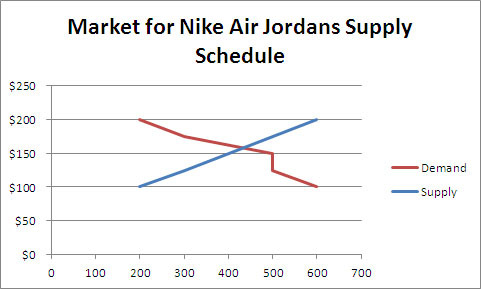

By Eduardo Gamez Jr (45134927), Cesar Campos (11539371) & Bailey Stewart (20045086)
Thank you to Anthony for appearing in our video and our TA Michael Shin for helping us understand Economics this quarter!
5 notes
·
View notes
Text
# New Yoker Problems
Hi, My name is Rose and I’m not from California. I’m actually from New York City, New York. That being said, there are an infinite number of differences between these two particular states. I have come across some of the weirdest difference between these two places but the one I notice the most often is the difference between the price of food. For example, take Chipotle. Chipotle in NYC is about 10 to 11 dollars with tax. As oppose to Chipotle in California is about 7.30 dollars with tax.
Regardless the biggest and most underrated difference between both states is the water; the tap or drinking water in particular. I HATE California drinking water. To me, it taste like pure salt water. No one in my family drinks this water. Obviously, I need water to survive. So as a result I buy and only drink bottled water. However, there are multiple economic factors that go into my decision about which type of bottled water I should buy.
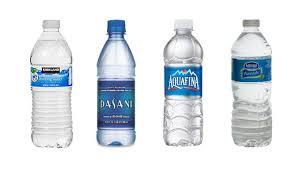
(image taken from google)
Market for Water
The market for bottled water is a competitive market. As there are many buyers and sellers and they all sell the exact same thing; portable water. Now, California has a generic and typical brand of water which people naturally gravitate towards and it’s called Arrowhead. Arrowhead is sold specifically in the west coast. Arrowhead to me taste like bottled California tap water. Therefore I don't drink this. Many different aspects cause shifts in the demand curve. One of the factors being taste. So if a large number of New Yorkers who share similar taste with me, suddenly decided to relocate to California, the demand curve of the market for arrowhead bottled water would shift left. However, the the demand curve of the market of bottled water in general would increase causing the curve shift right. The generic brand of water in New York is called “Poland springs”. Unfortunately, I have yet to find this brand in California.
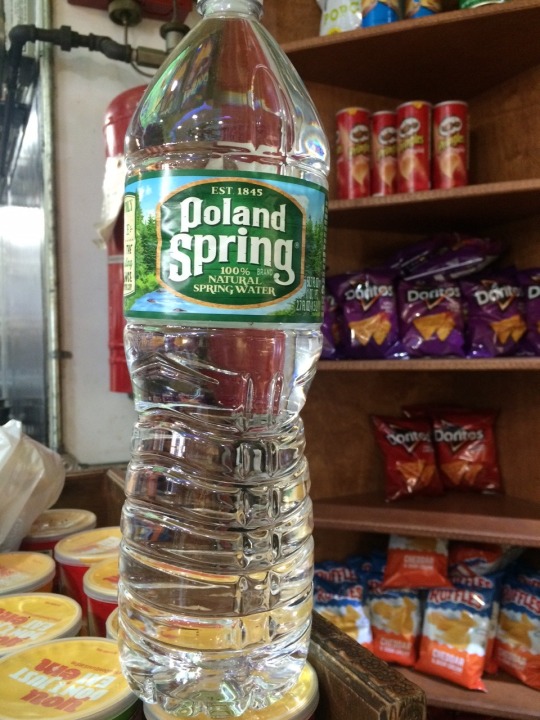
There are three types of water brands I can buy from: Dasani, Nestle Pure Life, and Aquafina. These are the only three types of brands that I have back home to my knowledge. Ultimately, this taste like New York or normal water to me. The three brands listed are all consider substitute goods as one price of good increases the demand for the other also increase. I usually buy my water in bulk or in a 24 pack at either Target or Ralphs (these two stores are the closest to me). Usually, there are promotions where one of these brands are on sale for $3.99. So naturally, I will choose the cheaper one, which for this week was Nestle Pure Life. Since the price of the Dasani and Aquafina was more than Nestles Pure Life, the demand for Nestles Pure Life would ultimately increase. Lastly, since all three brand types are substitutes , they tend to have more of an elastic demand since I can easily switch from one brand to another.
Generally, since water is a public good in the us, it is something I will not pay a lot for. My willingness to pay for a 24 pack of water is 5 dollars. I will not pay more than 5 dollars for water. As stated earlier, there are generally promotions where the pack of water is on sale for $3.99. For this week, my total consumer surplus was one dollar. Customer surplus is the difference between the amount the customer is willing to pay and how they actually payed for it. In other words, it's the amount the customer saved.
Lastly, negative externalities also play a role in this particular situation of mine. I waste about 96 plastic bottles in a month. And I don’t really recycle, I just throw bottles out in any trash can. These plastic bottles negatively affect the earth and the environment as they keep building up in our oceans and lands. As a result, California has something called a California Redemption Value. Basically, the state charge you a certain amount of money but you can earn this money back if you bring the empty bottles to a recycling place. Whenever I purchase water, I notice they charge me $1.40 for very pack of water. I don’t bring these bottle to a recycling center so to me, I view this as a tax or a corrective tax. I have never seen anything like this in New York, so I was definitely surprised by this.

Overall, New York is better than California. And we have better pizza and bagels thanks to our water.
Rose Sikder
69461958
0 notes
Text
To go or not to go back home for Spring Break?
With spring break coming up, many students choose to go home, relax, and hang out with friends. As an out-of-state student from New York City, I don’t have the option of easily going back home during the weekends or holidays as other students from California do so I rely heavily on major breaks such as winter, spring, and summer breaks to go home. For winter and summer breaks, there is no doubt that I will want to go home. I can go back for AT LEAST a month and trip will be worth it. However, spring break is a different story. Spring break is only a week long so I have to consider the pros and cons to see if going back home is worth it.
Factors to consider:
Willingness to Pay:
Because I travelled between New York City and Los Angeles numerous times before college, i am aware of the price range of flights. The price for a round trip can range anywhere from ~$250 (if you’re lucky) to ~$700 (if you’re desperate) depending on when you purchase your tickets, airline, etc. The cheapest flight I’ve been on for this trip was around $450 for American Airlines which I find is not too cheap but not too expensive. Therefore, my willingness to pay is $450 which means if flights were to cost more than $450, then I would not choose to fly back home.
Opportunity costs:
Lost wages: Because it is spring break, I can work up to 40hrs/ week on campus. If I were to go back home during spring break, I would be losing the potential wages I could gain from working. My opportunity cost would be (40 hours * $11) = $440.
Lost time: A nonstop flight from one city to another is around six hours. However, most of the time, the cheaper flights will have at least one stop at a different city. Let’s say total max time I would spend on flying is nine hours (including delays and waiting times). On top of that is the time difference. For example, if I were to leave at 8am from LAX, I would arrive in New York City at 5pm PST which is 8pm EST where the day is practically over. With the time spent flying, I could have used the time to work and earn money.

Conclusion:
Here is a picture of the prices of round trip flights from LAX to any airport in New York City. The earliest day I can fly back home would be Sunday, March 26. Because I would want to take full advantage of being back home, I would depart from New York City on Sunday, March 2 so that I would have stayed for an entire week. However, as you can see, the price for the round trip is $502 which is higher than my willingness to pay price ($450). Because of this, I chose not to fly back home because I know that I can find a flight for a price cheaper than $502 during the summer and stay longer than a week. Additionally, with the wages that I will earn during spring break ($440), I can use is to practically cover the costs of a flight in the summer.
Krystal Cheung
ID:29612572
0 notes
Text
Many principles of economy can be applied to things in our everyday life: walking the dog, deciding how much time to put into studying, and even video games. Now when I say video games I don’t mean the production and sale of video games, I mean inside the video games themselves. Valve Corporation is well-known for their online market platform Steam and a plethora of video games they have developed and published themselves, but what is not known to the masses is that most of their multiplayer games have their very own economies. We could go into great detail how Valve has essentially created its own economy with Valve being the government, games the market, and a number of externalities that arose from them. This write-up will focus on the supply and demand and the competitiveness of the market of Valve’s first person shooter Team Fortress 2.
Released in October of 2007, Team Fortress 2 was fairly inventive game with its diverse content and action packed first person gameplay. It wasn’t until 21 May 2009 when hats were introduced into the game. Yes, hats! Cosmetics that were intended to act as rewards for dedicated players, but were in high demand as soon as they were released. Over the years, Valve has added more content to Team Fortress 2, and that especially included hats. The cosmetics started to get more extravagant and intricate. Eventually a new status was introduced called “Unusuals” that had floating special effects around the hat. These special cosmetics could range from $40 USD up to $12,000 USD! People tried to maximize their chances in getting hats, but the real game changer didn’t begin until 2011. An update to the game in September 2011 added trading and this is where things start to become more interesting.

A virtual item like this is worth much more than you think. This item is valued at roughly $12,500.
With the advent of trading a lot of players decided that they needed to begin to organize all of their efforts. They started to give items “prices” based off of other in-game items and document them. Databases filled with information on items included things such as their “prices”, quality, attributes, and other information relating to the game. These databases became the standard that most players based the value of their items on, or in other words the market price. If a new item was just added to the game, its demand would initially be high, but also the price at which is was being sold was high. This is because the Team Fortress 2 market was both a monopoly of sorts and a competitive market. Each individual, in theory, had the potential to influence the market, especially on rarer commodity items. One could purchase rival sellers’ wares and markup the price elsewhere (reminiscent of price discrimination depending on what you were selling), thus gaining more market share power. Another reason would be because new items’ values could not be properly gauged and were based simply on how much the consumers (and sellers) valued them to be worth.
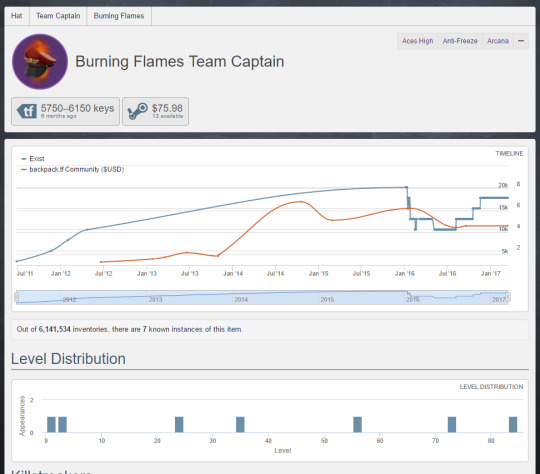
An example of the wealth of information collected solely for the purpose of trading.
The market was competitive in that quite literally anyone playing the game could become a seller. There were little to no barriers for entry or exit in the market, and the market seemed as though it could sustain a large number of vendors. The individuals who participated in the market had little marginal cost to worry about. All that was needed to care about was the fixed cost in order to run the game which was the cost of energy to power their computers (however, many were just teenagers living off their parents so effectively zero).
The interesting thing about this all is that a game was able to create a simplified version of an economy that was almost entirely structured by its player base. The company that developed the game did not necessarily intend for an economy to form and it could have intervened and acted as a government to moderate the commerce, but instead took a laissez faire approach. No one could have predicted that a demand for pixels on a screen would turn into a fairly lucrative market and especially one that was sustained for the most part by teenagers and young adults.
An article written by the New York Times let’s you a better idea of how ridiculous the whole situation has become. Some hats worth more than a Gucci designer suit!
Link: http://www.nytimes.com/2013/06/13/fashion/fire-when-ready-but-spare-my-hat.html
Gary Garcia
Student ID #: 41697548
0 notes
Text
WHAT’S SHAKING BABY

INTRO
Sometimes I have a surplus of way too many chips, sweets or left over food that doesn’t interest, so the demand for something different comes up. During these critical times to sooth my hunger, I like to go for random walks and see what I end up craving. These three-fast food restaurants’ usually end up being my last three choices because of one main product, their shakes. Strawberry, cookies and cream, smooth chocolate, these choices are influenced because of the value I hold for milkshakes are very high. As well as other factors, such as consumer surplus, advertising, or supply and demand itself.
Supply and demand
If we take a good look at these three-fast food restaurants’ we would see the probability of choosing In-N-Out regularly because of location (California). I’d say this because In-N-Outs demand for burgers dominates which means there is a bigger probability that people will purchase a shake with their meal. The deficit is that their supply is very limited because In-N-Out has locations mostly in California and some rare parts of the country. This is easy to prove by the simple fact that we never really see commercials on in n out during sports or daily slide of commercials. In-N-Out could easily build their demand and supply by expanding to the East. This is the reason I tend to value In-N-Out more at points because it’s a worldwide good but in a way exclusive to regions.
CONSUMER SURPLUS
Personally, the max I would pay for a milkshake would be three dollars and forty cents. So, if I was to pay for a Chick-Fil-A milkshake which exceeds the limit I would have consumer surplus of about nine or ten cents. Chick-Fil-A values their regular shake at three dollars forty-nine, this means they hold a higher standard than Jack In The Box and In-N-Out.


Advertising
I may not be the biggest television watcher in the world but if you have ads on apps, mail me coupons to specials on half shakes and burgers I will most likely choose to get a cookies and cream shake. Followed by two burgers one being free from Jack in The Box than In N Out and Chick- fil-a who never have coupons or new limited shakes, burgers etc.
Cristian Pineda Cortez
Student ID# 92196707
0 notes
Text
People Face Trade-offs
Trade-offs are a recurring principle of economics in my daily activities. The economic principle of trade-offs implies that for people to get what they want, something must also be given up. I consistently face trade-offs between work and school and also where I go grocery shopping.
I work for UCI at the Bren Events Center. I am capable of making my own schedule, deciding how many hours per week I’d like to work (with a max of 20 during the school year) and also which days to work. With such flexibility, I work between 12-18 hours per week. These 12-18 hours of working are hours I give up studying to be able to make some money. I can also look at the situation the other way around. Each hour I spend studying is an hour I could have been paid for. During the beginning weeks of each quarter, I tend to work closer to 20 hours per week, being that it’s easier to keep up with my academics and still earn money. As the quarter progresses I start to lessen my hours, indicating I value the hours I study more so than the hours I spend at work. I indeed do value these hours more as the quarter progresses because I begin to need to study more often as to pass midterms and finals.
The grocery stores in the neighboring areas of UCI, as I like to say, ‘sell convenience.’ Examples of these stores are Trader Joe’s and Albertsons. These stores are aware that students are not likely to be willing to travel to another city for groceries, thus, tend to overcharge (compared to prices where I’m from). I refuse to pay these prices and so I actually do travel elsewhere for groceries. My roommate told me he had seen a pound of carne asada (meat) go for over $10. I have never paid more than $5 to the pound. I go to an El Super grocery market in Santa Ana to purchase groceries. The trade-off I face in this situation is the extra time it takes me to travel to and from the store. I could easily walk or catch a shuttle to Albertsons or Trader Joe’s within 10 minutes. That extra time could have been spent doing any number of things, such as studying or going out. It also costs me gas to to be able to leave Irvine for my groceries. I feel that extra time I lose is compensated in the money I save when buying groceries from a store with reasonable prices. El Super also tends to carry ethnic foods that Irvine stores may not have that I greatly enjoy, such as Mexican candy. The gas I use going to Santa Ana hardly impacts my wallet. I am already living on campus, so I can walk, bike, or take a shuttle to get around. I don’t often need to use my car since everything other than groceries are fairly close, meaning I don’t waste much gas. I also only travel to the market every 2 weeks when I get paid. Going to Santa Ana is my most gas-intensive trip, and since I only make the trip twice a month, my wallet is not hurt much.
David Ramirez 82268863
0 notes
Video
youtube
In our Econ Live video skit, we follow how economics plays a part of our everyday lives through the consumption of a popular clothing street-wear brand known as Supreme. Hope you enjoy!
Steven Nguyen #34389808
Calvin Lui #84152100
0 notes
Video
youtube
The economics behind the billion dollar industry known as sneaker reselling
By Eduardo Gamez Jr (45134927), Cesar Campos (11539371) & Bailey Stewart (20045086)
In the video we will discuss, the demand and supply of these sneakers, the opportunity costs behind purchasing them and the marketing behind companies such as Nike and Adidas

We decided to research the economics behind the resale of sneakers due to a recent increase in popularity of expensive and rare sneakers. We noticed this trend catch on by observing students around campus wearing sneakers made by sportswear companies such as Nike or Adidas. From personal experience we know that these students were paying hundreds of dollars for these sneakers as they had already sold out in stores. Most, if not all, of kids our age own or have heard of sneakers such as Yeezys or Air Jordans. When we focused on the topic we realized that the sneaker resale market is an ever-growing billion dollar industry with lots of profits to be made.


By Eduardo Gamez Jr (45134927), Cesar Campos (11539371) & Bailey Stewart (20045086)
Thank you to Anthony for appearing in our video and our TA Michael Shin for helping us understand Economics this quarter!
5 notes
·
View notes
Text
I have recently just started my journey in aviation and have realized that it is a very unique market. In 2015, there were an estimated 590 thousand pilots registered in the US making it a very small market. As a result, prices are subject to monopolistic competition. This is expressed well in the headset market. Normally Bose sells their best consumer grade headset for the general population (QC25) for $300

and is very popular for its active noise reduction and is relatively cheap since it is in a free market with many sellers and similar products. However aviation is a smaller market and has their comparable product, the A20, for $1100.
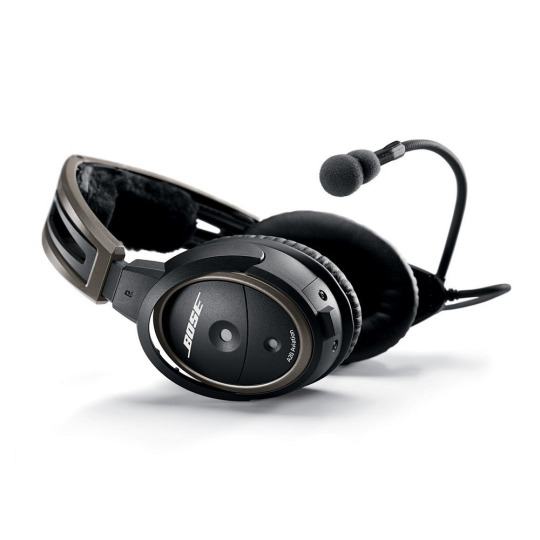
This is an immense markup for the same product but with a couple other features. One of those is the fact that this headset is TSO’d or is endorsed and registered with the FAA for use in the cockpit in commercial operations. As a result, this becomes a monopoly since there is a big markup in price because this is the only quality product in the market with that rating. There is actually an interesting compromise for receiving this Active Noise Reduction quality headset but at a somewhat cheaper price. The uflymike is a company that makes a combo to attach to your original consumer grade headset so that it can be used in the cockpit.

For $275 you are able to make your own monopolistic headset by buying from a 3rd party seller but at a cost that is almost equal to the original consumer grade headset. As a result, there is still a major cost investment since the market is small and has monopolistic qualities to it.
Overall aviation is costly since it is a small market but in the end, worth it from the enjoyment earned from the freedom of the skies.
Armaan Patel
0 notes
Text

Vivian Pham 72405251
Rahul Tuli 63087167
Can you imagine paying $11,000 for a pair of sneakers? Although it may sound outrageous to you, there are actually people who collect sneakers and are willing to pay this price known as ‘sneakerheads’. In fact, it is a whole entire different culture introduced by basketball and hip-hop and first popularized in the 90s. Here are some examples of highly coveted shoes in the sneaker world and the prices they go for.
NIKE DUNK LOW PRO SB "PIGEON"
Retail price: $69.95
Resale price: $5,500
NIKE AIR YEEZY 2 SP "RED OCTOBER"
Retail price: $250
Resale price: $6,500
NIKE AIR MAG "BACK TO THE FUTURE"
Auctioned off for as high as $200,000
ADIDAS YEEZY BOOST 350 V2 "ZEBRA"
Retail price: $220
Resale price: $2000
NIKE DUNK HIGH LE "WU-TANG"
Not sold to public
Resale price: $15,000
JORDAN AIR JORDAN 4 RETRO "EMINEM"
Not sold to public
Resale price: $14,500
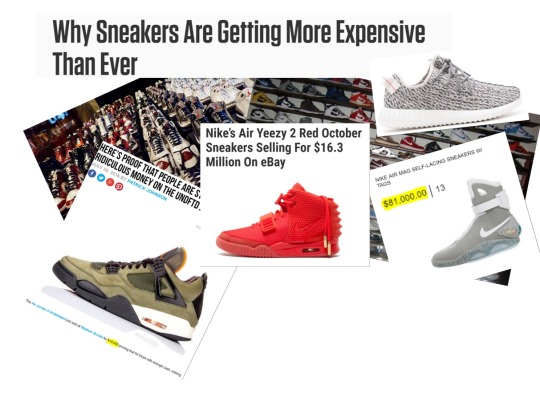
And the list goes on and on… So the question remains: Why are people willing to pay these prices? Usually, in economics, when the demand goes up, the supply should increase, and when the price goes up, the demand naturally decreases. However, it appears that the world of sneakers does the exact opposite: the demand is extremely high, while the prices are outrageously high, and supply low. This can be explained by applying the concepts of scarcity and perfectly inelastic demand to these shoes. What makes these shoes so sought after is their scarcity. Only a set amount of shoes is made and released. For example, only 36 of the Nike Dunk High Le “Wu-Tang” sneakers mentioned above were released in 1990. Moreover, the fact that only a specific amount of shoes is released makes it perfectly inelastic. As depicted in the graph below, the supply of the sneakers is a vertical line, because it is constant. Therefore, as the demand increases, the quantity supplied is constant, causing a rise in price. For this reason, we are able to see why some sneakers that may seem ordinary to me and you are valued and purchased at such a high price.
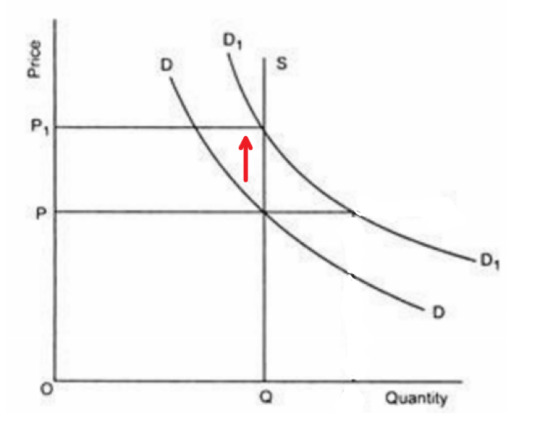
0 notes
Text
Parking at UCI Mesa Court
Peter To (ID#40195592)
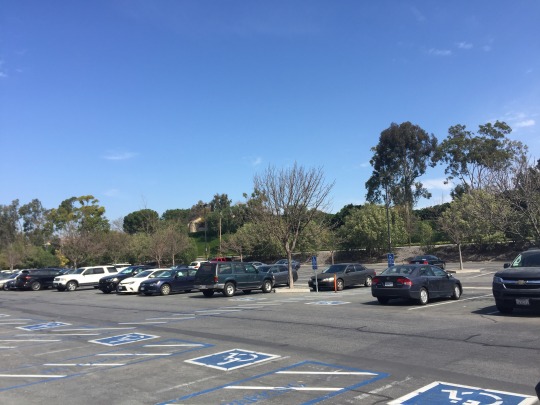
I am currently living at Mesa Court, one of the UCI on-campus residence halls. At the beginning of this school year, I was looking up prices for parking permit. When I looked at the price, I was totally shocked. The price of the permit is $101.00 per month! I need to decide whether or not to bring my car with me to the hall. Economics concepts come in handy for this situation.
Because I am a rational person, I closely considered the best options. If I decided to bring my car, the opportunity cost forgone was the $101.00 I could save every month. If I decided not to bring my car, the opportunity cost forgone was the value of getting to other locations easier by driving a car. But since I don’t value the ease of traveling with a car above $101.00 per month, my willingness to pay for the permit is below $101.00, I decided not to buy the permit.
After I have lived at Mesa Court for about 2 weeks, I realized that the residence hall’s parking lot is half empty. Why would UCI charge a substantially high price while not too many students purchase parking permits? Below is my analysis on UCI parking permits based on what I learn in Economics.
Private good: UCI parking permits is a type of private good because they are both excludable and rival in consumption. A parking permit is excludable because you need to pay for it. It is rival in consumption because if a student bought a parking permit, there are fewer parking permits to purchase.
Monopoly: Since UCI is the sole firm that provides the parking permits without close substitutes. UCI owns the land within the campus which no other firms can use. UCI can take advantage of this opportunity and restrict the number of permits provided so UCI can charge a higher price. In particular, UCI is a natural monopoly on providing parking permits. There is a negligible marginal cost of additional parking permits made, so the average total cost of providing parking permits falls as the number of students needing a permit rises.
Elasticity of Demand: The demand for parking permits should be fairly inelastic. There are no close substitutes because UCI is the only seller to the parking permits. Also, since most students living on campus need a car to travel to other places, parking permit is a necessity for the students. Therefore quantity demanded for parking permits responds only slightly to changes in the price. This means the extra revenue from selling at a higher price is greater than the lost revenue from selling fewer permits.
Negative externalities: When more residents bring their cars, it will create some negative externalities. It would increase congestion on campus and create heavy traffic. Also, more cars leads to more pollution being emitted. Therefore, the cost to society of providing parking permits is larger than the cost to UCI. Some actions need to be made by UCI or the government in order to cover these external costs. They need to increase the price of the permits so the optimal level of output would be achieved.
From this graph, we can see the level of output that UCI will choose and that is socially efficient. Since the cost of making a parking permit is negligible, in this case I will assume it as $0. UCI would produce a quantity (Qm) that is much lower than that in a competitive market (Qc) but in a much higher price. If it is a competitive market, the price would be driven to marginal cost and approaches the socially efficient level of quantity produced.
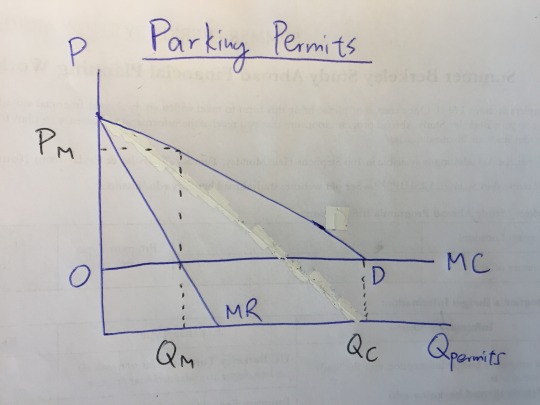
From this analysis, we can see the reason that why UCI still charge a substantially high price for a parking permit while not many students are willing to purchase the permits. One reason is that UCI can maximize their profits with low level of output since UCI is a monopoly in providing the permit. Another reason is that with higher price students will have the incentive not to buy parking permits, which can reduce the negative externalities of traffic congestion and pollution. Also, since the demand of UCI parking permits is fairly inelastic, UCI can earn higher revenue from selling at a higher price until the point where the price effect is equal to output effect.
0 notes
Text
Adidas NMD’s & Ultraboosts and its connection to Supply and Demand
Introduction
I recently wanted to acquire a pair of Adidas NMD’s and Ultraboosts and started to search for them online and in stores. To my surprise, I could not find any in stock from major retailers, rather I only found them in the aftermarket (Market where people resell their items) with a price tag that was much higher than the original retail price. Looking back at the retail price I saw that when in comparison to the costs of producing the shoe, the retail price was over 400% more than the cost of production.
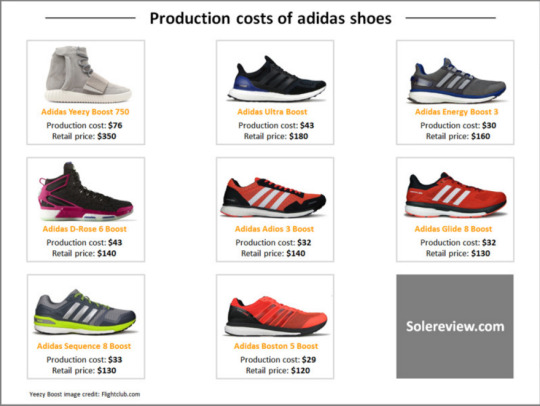
I realized that the reasoning for this highly inflated price tag was due to the demand curve. Over the past few years, Adidas has increased in popularity through celebrity endorsements (Kanye West and his Yeezy’s) and successful marketing operations. Adidas is a Brand Name in the athletic shoe industry and because of this people were willing to pay more for brand item even though there were cheaper alternatives. People’s positive tastes towards the Adidas brand drove the demand curve to the right.
As a result of this, the price of Adidas increased as well as the supply for most of its products. However, I noticed something strange about the Supply curve for Adidas NMD’s and Ultraboosts. The demand was very high for those shoes but the supply was extremely limited. Why would Adidas limit their production to a set amount when they can earn more profit in the short run by producing more? This goes against everything I’ve learned thus far regarding profit maximization. The answer is simple, marketing. The NMD and Ultraboost line of shoes was never intended to earn the firm large amounts of profit. Rather it was used as a marketing tactic to manipulate people's tastes in order to increase the reputation and the popularity of the brand. Consumers would value the brand at a higher price than the equilibrium and their willingness to pay increases as a result of this allowing the firm to charge higher prices while still earning positive profits. This marketing tactic gives the firm a large producer surplus at the cost of the consumer surplus since only buyers that value the brand at the given price could enter the market. Many consumers are excluded since the asking price is merely too high for them to enter the market. I went through countless websites in search for NMD’s and could not find a single pair in stock at retail price. Everyone want’s a pair of NMD’s or Ultraboosts but due to its extreme shortage, obtaining a pair from the firm or a 3rd party retailer is almost impossible. The only alternative to this is to buy it from a reseller in the aftermarket.
After Market
The retail price of NMD’s/Ultraboosts were already high enough but after looking through Ebay and other aftermarket mediums, I saw that the aftermarket price can be upwards of 50%-200% higher than the retail price! Why is that so?
I noticed the popularity and “hype” that was associated with Adidas branded shoes and because of this I wanted a pair of NMD’s and I was willing to pay more than the retail price in order to obtain them. NMD’s are sold in extremely limited quantities and obtaining them at retail price is very rare. I’ve seen in the past that item’s sold in limited quantities by reputable brands increase in price over time rather than depreciate like most other items. Due to the shortage, an after market emerged. People would buy the shoes at retail price and resell them at a much higher price. The only reason as to why this was possible was because people’s willingness to pay was absurdly higher than the actual price so being able to buy at retail gave them a large consumer surplus.
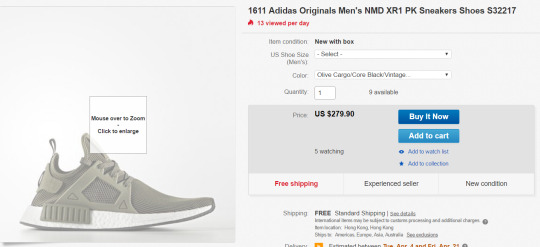
*Price was more than double that of retail
Conclusion
This entire scenario demonstrates the success of Adidas’s marketing campaign. People's tastes were changed and the demand curve shifted far to the right as a result with price soaring. Brand names are often good for society since it ensures quality but in this case it ended up being negative. Popularity rose too high to the point where the price increased by more than 100% excluding many buyers from the market as a result. In the end, I was lucky enough to find the pair of NMD’s I wanted at retail price. I could sell the shoes at any point at 200% its retail price giving me a profit of 100% and allowing me to enjoy a large consumer surplus.
Alvis Pham
ID# 41089121
0 notes
Text
OLIGOPOLY IN REAL LIFE
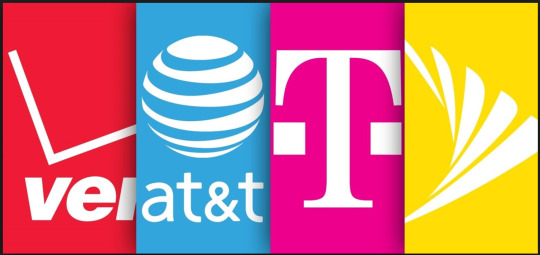
Oligopoly means a market has only a few sellers offer similar or identical products.In our life, the most important oligopoly happens between the large cell phone companies. The market currently dominated by Verizon, at&t, T-mobile, and sprint. When we look at the wireless market, we can find that there is really a duopoly between Verizon and at&t, which have about two-thirds of the market between them.
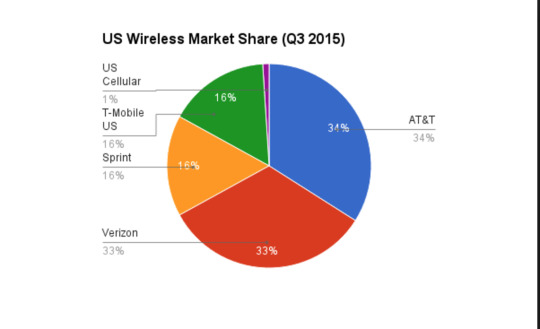
So what is the result of the oligopoly?From the table, we can see that the price of the plan between these four companies is almost same.
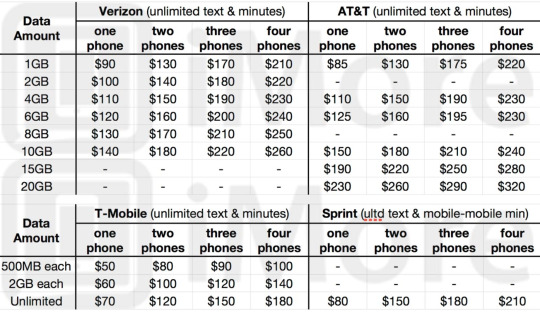
The price of the rate plan is higher than the equilibrium price. The four companies now achieve a nash equilibrium which means a situation in which economic actors interacting with one another each choose their best strategy given the strategies that all the other actors have chosen.
Why the small companies cannot enter the market? At first, the cell phone market itself needs the big companies to sell. Doesn’t like the food, clothes companies, the cell phone companies need to have a certain scale to produce. Secondly, the merger will happen. The big boys could be the big winners, which is why investors are looking to put their money on at&t if the merger happens.
0 notes
Text
Serious Side Projects

As someone fascinated by the science of psychology, and driven by the thrill of a challenge, I decided last year while attending WonderCon, a pop culture convention, to find a way in which I could bring those two things together in such a way that helped others in some way, while providing an activity that was fun and competitive. With this goal, Psychosis was born. A board game that explored mental health, where players took on characters whose abilities stemmed from their diagnosis; running from the monsters in the dark, or “Phobias.” (Follow the journey @serioussideprojects on Instagram)

Lots of time went into the actual creation of the game, but that's a story for another essay. This post will focus on the economics.
Like with all new business ventures, expenses were top priority, as while I accept that their are large financial risks with entrepreneurship, I am still a broke college student. Due to this, I was always careful with my budget, many times taking more of my own time to prevent expensive mistakes, an opportunity cost.
Really, you could think of the entire venture as an opportunity cost of sorts. I have very limited funds, and despite my willingness to put in the time, money will need to be spent. Money that could have been spent on food, recreation, or saved for next month's rent. Instead, I invested in myself, and my aspiration, in the hope that I will not only gain experience, but at least break even.
As for the price of the product, that's still being worked on. Artwork for the game cost a flat $500, and the paperwork needed to become an actual business another $175, and another $50 to have a nice prototype printed and laminated. These don’t include the costs of other supplied needed, like flashcards for early versions of the game and the early version of the board. Then the big one, my permit to open a booth at the very place that inspired me to start in the first place, WonderCon (taking place March 31st to April 2nd in Anaheim so come check it out!), which set me back $1000 dollars.
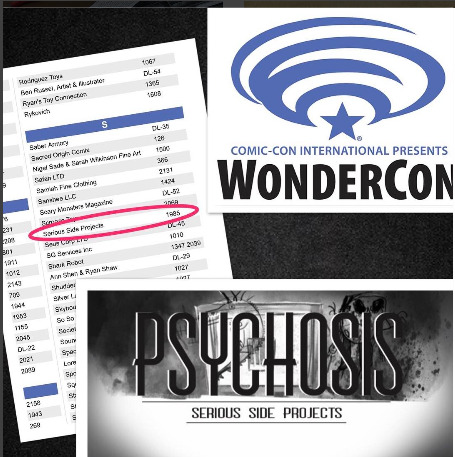
With all these expenses out in the air, we can finally start selling stuff.
WonderCon is a huge warehouse full of booths selling everything imaginable from He-Man action figures to oil paintings of Admiral Ackbar. It is a highly competitive market, with both monopolistic competition, such as art and indie board games; and other more perfectly competitive parts, like mainstream comic books or action figures. In the more PC markets of the convention, a vast majority of booths will charge similar, if not identical prices for their similar if not identical products. As someone more on the monopolistically competitive side, I have more flexibility with my products (namely merchandise like prints and buttons), as people charge anywhere from $5-$30 for a print. I will have to be smart with my pricing and booth layout, in order to pull buyers in and get them to actually buy my product.

Another issue I'll be facing, is launching the board game itself. As of now, it is nearly complete, just going through balancing to keep characters around the same strength, but I’m already talking to manufacturers and discussing pricing. Currently, we have two versions of the game in the works, as one has slightly different sized components, as we try to decide the best course of action. Industry standard for board games ranges anywhere from $45-$65 dollars, and we hope to be selling at the lower end of the spectrum after factoring in shipping, advertising, ect.

Hopefully, I will see profit from this venture, or at the very least gain experience and hit my break even point. Either way, an understanding and knowledge of economics, not only from the financial side, but the decision side as well, will help me attain my goals. (Also, follow us on Instagram @serioussideprojects if I haven't convinced you already!)
Nathaniel Dalerio 33595033
0 notes
Text
An Analysis of Brandywine
On Wednesday, February 22nd, many the dorms in Middle Earth experienced a blackout. This occurred early in the day, so the darkness wasn't much of a hindrance. And many people could afford wait to shower, so the lack of hot water wasn't that big of a deal either. What seemed to really impact my fellow residents, was lunch. Pippins, one of the dining halls in Middle Earth, was also affected by the lack of electricity.This meant that it could no longer provide the hot lunch the many students wanted. The only foods they could serve were cold sandwiches and cereal. Not exactly appetizing for the many hungry freshmen in Middle Earth. As a result, the true effects of the blackout could be seen by the sheer number of people that swarmed to Brandywine, the only other dining hall on that side of the campus.
I was fortunate enough to acquire the number of people that went to Brandywine during the blackout on that day. However, the single number would mean nothing without an average to compare it to. So, for every day of last week, I acquired the number of people that ate at Brandywine between 10:30 to 4:00. The average I calculated turned out to be 707 people. According to their records, 1,397 students went to Brandywine between 9:30 to 4:00 on the day of the blackout. Although Brandywine was forced to open an hour earlier, twice the usually amount of people ate there!
Quite obviously, I knew that more people would go to eat at Brandywine if Pippins was closed. And the difference wasn't unreasonable at all. However, this clearly showed the effects of a change in demand due to one less "supplier". I didn't plan far enough ahead to take a picture of the dining hall on that day but passing by, it was clear that the lines were extremely long and the interior was crowded.
Further analyzing Brandywine, it is clear that it is not what could be considered a competitive market. This is largely due to the fact that there are only three freshman dining halls on campus and that all freshman living in the dorms are required to purchase a meal plan.That being said, the dining hall on campus cannot be regarded as a firm like those that we have learned about this quarter. One issue is the lack of payment to individual dining halls. Payment for the meals is typically paid to the University, not to the individual dining halls. As a result, I consider the dining halls as a monopoly since UCI is the only “firm” from which freshmen can purchase meal plans from. Furthermore, since the cost of each meal is more or less counted in a single "swipe", the price of which does not change (at least in the short term), it is difficult to gauge how much a student values one dining hall compared to the other except in the number of people who eat there. Therefore, the quantity I've gathered is the only indicator of the increase in the value of Brandywine when Pippins in unable to provide hot meals.
In addition, I imagine the demand curve for meals in the dining halls to be fairly inelastic. Due to the requirement of freshmen to buy a meal plan, the very minimum amount of meals that can be purchased is only about half of the maximum amount that can be purchased. However, this alone is not sufficient proof to show that the demand curve of meal plans are inelastic. I also consider the meals in the dining hall to be a club good. It is possible to prevent someone from eating there since people have to be admitted in. However, eating a hamburger would not prevent someone else from eating one as well. Since meal plans must be purchased with the cost of housing, it could be considered a complement to freshmen dorms.
In conclusion, although Brandywine is not a common example of a "firm" the concepts in economics still greatly apply.
Teri Wu (ID#: 19763036)
0 notes
Text
Cost-Benefit Analysis: Getting a Job while Attending College

Introduction:
Last quarter, I came face to face with the issue of time management. Growing up, I never really worried about going out and having fun; all I really cared about was doing well in school and being home to watch my shows. However, when I came to college, I felt like I needed to be a more socially active person. Unfortunately for me, I was unaware of my inability to manage the time I had between school and play. If I think about it now, last quarter was about 60% play time and 40% school. I was unaware, at the time, how little I had been focusing on school so my GPA was affected dramatically. This quarter, I decided to do some self-reflection and I concluded that what I needed to do was get a job. Doing this, of course, would mean that I had to juggle school, play, and work. Through my self-reflection, I set my priorities straight; school was always going to come first, then work and play time followed. By getting a job, I had more motivation to get my school work done because I knew that working would take up a lot of my time. I recall that last quarter, I had so much free time on my hands that I believed that I had all the time in the world to play. However, because of my job, I became more aware of the fact that time was a luxury. Before getting the job, I called into question a lot of the costs and benefits and, therefore, I have done a cost-benefit analysis of working while attending college.
Costs:
Health
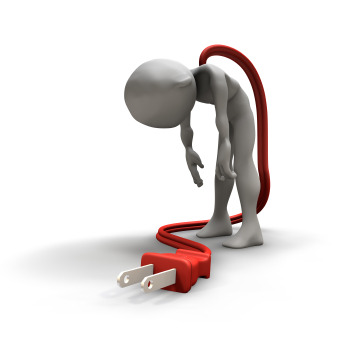
Because I attend my classes in the morning and work closing shifts in the evening, I only have about 3 hours between classes and work to have a meal. I try to have breakfast between my morning classes but a lot of the time I only have a short amount of time to get from my class to the dining commons for breakfast before I must leave again for my next class. Because of this, I eat a very light breakfast. During the 3-hour gap that I have between class and work, I have a fulfilling lunch. I knew before I started the quarter that I would be working closing due to my schedule. I usually work 3pm to 11pm about 4 days out of the week. Some days I don’t have dinner and some days I don’t have time for lunch at all because of this need to get work done in the short amount of time that I have between school and work. I knew that this would affect my health and eating habits negatively but I was willing to put in the sacrifice since I knew it was only 4 days out of the week and I knew I would find time to snack.
Not only does it affect my eating but it also affects my sleeping schedule. Of course, the 3 hours that I have between school and work is not enough to complete all my homework assignments. Therefore, I must work on school assignments even after I get off work. I was prepared to only get 4-5 hours of sleep a night before I had to start my next day again at 8 am.
Transportation
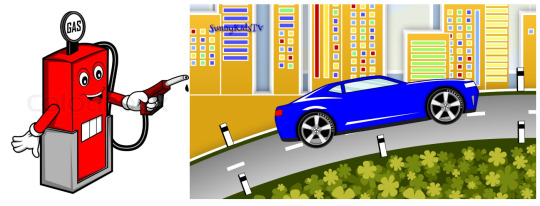
Being from Northern California, I did not feel the need to drive anywhere other than the occasional trip to Target. I went the entire first quarter without a car and I felt it was unnecessary for me to get a car. However, when I got the call from my job during the winter break, I was informed that the location was far, but they were still looking to hire me. I put this into consideration and talked to my parents about getting a car. During the first quarter, I did not have to bear the burden of paying for a parking pass, however, this time, I spent a good amount of money on the parking pass. The distance of the dorms to my workplace is about 8 miles and it takes me about 15-20 minutes to get there. Getting a car would be costly, especially because of the higher gas prices in Orange County, however, I felt that it was necessary to take one with me when I returned to school.
Benefits:
Income

One of the big reasons why I wanted to get a job this quarter was because I felt the need to start ahead of time to save for rent next year. I also felt that I needed spending money because I was tired of asking my parents all the time. It has certainly been beneficial having the extra spending money. Moreover, I can develop more money saving habits ahead of time. Having to worry about not having enough money has always been something that I hated. Because I found a job, I was getting a biweekly paycheck that helped provide me with food and fund my needs.
Motivation

By getting a job, I have been more motivated to get my work done ahead of time because I do value my sleep a lot. By getting most of my work done ahead of time, I could get more sleep. This desperate need for sleep and lack of time motivated me to get my school work done. I have certainly spent much more of my focus on school than I did last quarter.
Employee Benefits/Self Satisfaction

The area where I feel I have benefited the most is certainly with all the employee benefits. I work at Starbucks and anybody who knows me knows my addiction to coffee. By being an employee of Starbucks, I get employee discounts. This has helped me save a lot of money on coffee. However, the best employee benefit, I believe, is getting to make the coffee itself. Before working at Starbucks Coffee, I worked as a barista in a small café of a grocery store. I remember the joy of making coffee so much that working at Starbucks has been a small goal of mine. The simple satisfaction that I feel from every drink that I make is enough to say that benefits certainly outweigh the costs in my decision to work while I am attending school.
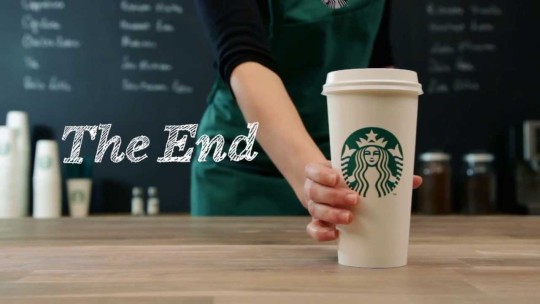
Conclusion
I have grown and learned much more after working for only 3 months. Time management continues to be a problem but not much of a problem as it was before. Moreover, I have seen an improvement in my grades. I have more focus on the important things in life and I have learned more about the important things in life. Working at Starbucks Coffee has always been a dream of mine and I am glad to say that I have fulfilled this small goal of mine. I have learned about the importance of relationships and the satisfaction in pleasing the customers. I would have learned all this stuff at any job but it is better that I learned all of this while enjoying my work. While searching for a job, I was offered and interview at both Peet’s Coffee and Starbucks Coffee. Peet’s was a short distance away and this specific Starbucks location was much further. There were the costs of transportation that I had considered but the biggest benefit, I believe, is being able to work in an environment that I believed I would thrive the most. I took on the costs of working at Starbucks and, in the long run, the benefits certainly outweighed the costs.
Kathleen Lo -- 68721415
March 16, 2017
(all photos found on the web)
0 notes
Text
The Economic knowledge that I’ve used to buy a pre-owned car.
Two weeks ago, I started to consider whether I should buy a car for my college life. Since it is my first car in my life, the decision was hard to make and many factors were involved while I was doing the research. Fortunately, combining with the knowledge that I’ve learned in this course, I made the right decision far more easily and confidently.
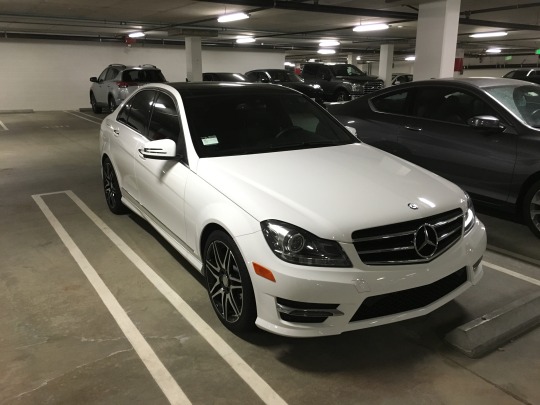
First off, is it mandatory for me to buy the car? I live somewhere not far away from the school, and by taking the public transportation system, I can commute between my apartment and school without any difficulty. What’s more, buying a car is more than just buying the car itself. I have to consider things like insurance cost, fuel cost and the repair and maintenance cost as well. It’s no doubt that buying a car will cost more in a short-run situation. But the problem is, without my own car, I can’t go somewhere else without much effort. That being said, if I don’t have my own car, I will lose a lot of opportunities in social potentially, and also have less possibility(or motivation) to find a part-time job. So in the long-run situation, not buying a car will give me less experience of my life besides the study, which might be a negative effect in the future. Indeed I have to pay a lot of money to buy the car, but comparing the opportunity cost, I chose to buy the car. So here I’ve learned my first class, when I have to make choices, I instantly face trade-offs.
Then it comes the second question, what kind of car am I going to buy? There are several cars that I’ve considered. Sedan, Coupe or the SUV. To me, since I don’t have many friends to take along with me, I don’t think a SUV will be my choice. Also according to the Internet, SUV’s have higher chance to flip over when involved with a higher speed crash, though in many cases the SUVs are safer, but the fuel economy is something need to be considered. Choosing between a Sedan and a Coupe, I think the Coupe will be a nice choice for me to buy. However, after doing some research on the Internet, I found out that even with the same platform, let’s say a BMW 3-Series, the coupe was much more expensive than a sedan, along with less seats. The unique design of the Coupe also causes more problems and costs in general. Comparing all the models, I chose the Sedan eventually. Listing the factors and comparing the opportunity cost is really important when making choices.
Then here comes the more complicated problem, which specific car should I buy? Should I buy a reliable and fuel-efficient Japanese car, or a high-end, luxury but also affordable German car? Again, I was facing some of the opportunity costs. The Japanese car might never give me any problem and the maintenance cost might be very low as well. Also due to lack of performance, they also have better fuel economy, so that owning a Japanese car would save me a lot of money. However, since I do consider driving a better performance car was crucial to me, and I do love driving cars and it would give me confidence, I started to look into the German cars. After doing some research, I found out that the Japanese car might not be as cheaper as I thought. For example, when I was looking for a pre-owned 2013 BMW 3-Series compared to a 2013 Pre-owned Toyota Camry and a 2013 Infiniti G37, I found out the cost of ownership based on 5 years period was somewhat really close for all these 3 models. Especially for BMW, which comes with 4 years free maintenance, the difference between the overall cost was really close to each other. And many other German cars also require maintenance every 10,000 miles, comparing to the maintenance interval of the Japanese cars which was 3000 miles, the difference in maintenance was really nuance. German cars indeed suffer from some reliability issues, but to me I see that as a unique experience during my ownership of the car.
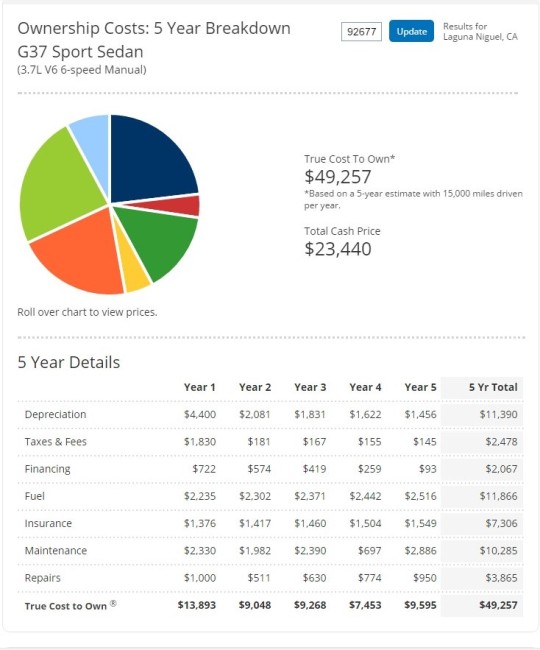
Cost of owner ship of BMW

Cost of ownership of Mercedes-Benz
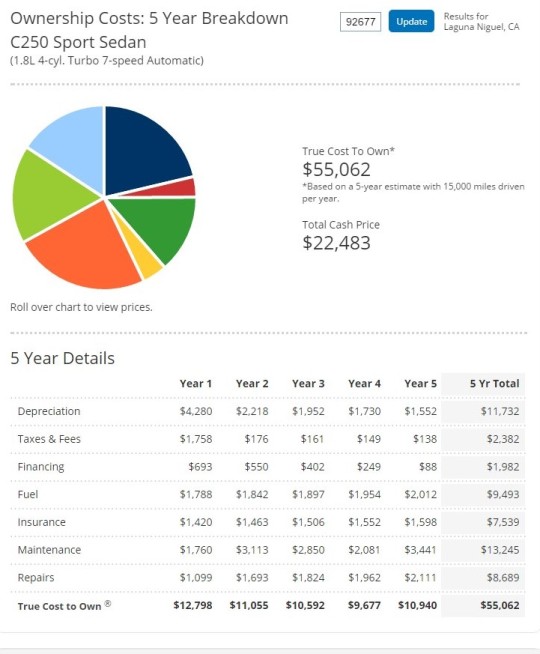
Eventually I narrowed down my choice to the German luxury cars. Then choice between BMW 3 Series, Mercedes-Benz C-class and Audi S4 became another problem for me. After searching the website, I found that BMW had most cars listed on the website, while the Mercedes and Audi were far behind. I wanted a performance sedan, so the BMW 335i might be the best choice for me. However, since the market’s demand for the BMW was much higher than the other two brands, the dealership also asked more for a BMW compared to the other two brands. And it might be a problem for me to sell my car in the future. Since there were so much supply of the BMW 335i on the market, it would be really hard for me to become competitive unless I sell the car underneath the average price, which means I need to pay more for the performance and sell less. The BMW 335i was a good car, but if I did so I would suffer from more loss. So I looked other cars, which could have the same performance but much cheaper. The Audi S4 was a better performance car, and since Audi does require more maintenance and comes with more high-tech, the car price was even higher than the BMW. Then I found the Mercedes-Benz C350, which equipped with a powerful V6 and loaded with many features. The car was really rare on the market, and since there wasn’t much buyer for this particular vehicle, dealerships tend to ask less for the car and it would be easy for me to bargain. What’s more, since Mercedes-Benz no longer produce C350, the car might become the symbol of the last generation of the Natural Aspiration engine model, which means it can attract more interest and demand in the market under the long-run situation. Besides that, according to J.D Power, Mercedes-Benz had better reliability than most of the other brands, which means I could save more on repairing and maintenance(the interval is 10,000 miles with 2 more free maintenance). So I went to the dealership and eventually decided to purchase my 2014 Mercedes-Benz C350.
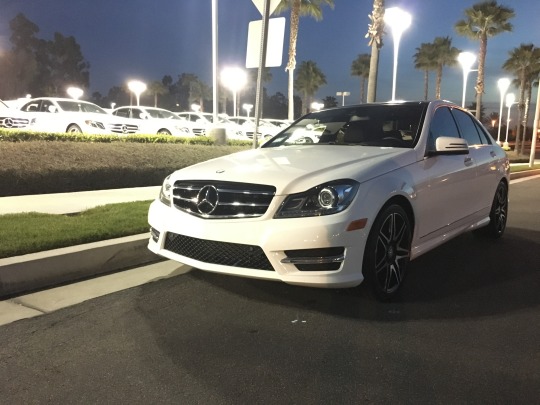
Also when I bought the vehicle, I didn’t buy it with the cash. Instead, I paid 50% of the car and used the rest of the money to invest. I used some of my money to invest in the stock market, while some of the money for finance products. Also I found a part-time job to pay my car loan so that I can be sure I can have the payment every month and I won’t be losing too much money after several years. The car not only became a useful tool, but also motivated me to engage more with this society and to know more about economics in our lives.
Minyu Sun
#24393181
0 notes